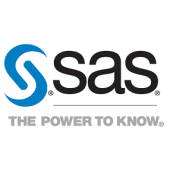
Change with a purpose: Putting people at the heart of your COVID-19 recovery
With societies across the globe still some way off returning to the ‘old normal’, many businesses are set to continue suffering from the impacts of COVID-19.
The time now referred to as ‘The Great Shutdown’, where lockdown measures were at their peak, caused many businesses to haemorrhage money. As a result, people, and the economy as a whole, are feeling the impacts as businesses close stores, restaurants and offices, cutting jobs in the process.
Businesses might consider staff redundancies an unfortunate consequence of a recession and, for many, it may seem an essential strategy to survive. However, what if there is a better alternative; one which will not just help them survive, but bounce back? Businesses should be placing people at the very heart of their COVID-19 recovery.
The beginning of a long road to recovery
Some businesses have been forced into drastic measures, such as redundancies, indicating that they may be starting on their road to recovery, with the first priority being survival. Naturally, cutting costs is a great way to do that, particularly when consumer spending is low during a time of economic uncertainty.
However, in this effort to become leaner, businesses can often make the mistake of dispensing with resources which can still provide huge value. This is often the case with employees, particularly those who businesses regard as having an outdated skillset. Businesses all too often ignore the potential that these people possess. All they need is the right training.
Leanness doesn’t have to mean less
The digital deficiencies of some businesses were exposed in the worst possible way during the disruptions caused by COVID-19. For example, within the insurance industry, call centre staff being sent to work from home exposed severe weaknesses in their online customer service platforms. This resulted in a build-up of cases, particularly as the number of claims associated with the pandemic rose.
In response to this, businesses will be looking to accelerate their adoption of digital channels. For many industries, this will have a profound impact on business models. The grocery sector is a good example. To create a more streamlined shopping experience for their customers, businesses successfully migrated to digital and mobile platforms, encouraging new customers and supporting existing ones through a difficult time.
As part of this, they also expanded their home delivery service to counteract lockdown and social distancing measures. During this time, the sector was able to keep employment levels steady, while creating new job opportunities across their stores, warehouses and delivery services.
This shows that job losses do not have to be a consequence of innovation and tough economic climates. Instead, businesses and HR departments can leverage analytics to identify areas where the employees can be retrained and redeployed. This will not only improve their value to the business but enable organisations to retain irreplaceable experience and existing skills. And looking further ahead organisations can also use workforce analytics to forecast what the job mix needs to look like as digitalisation becomes the norm.
Moving forwards, the technology can also help to prevent skillsets becoming outdated and redundant. By applying analytics to the workforce, businesses would be able to forecast skills requirements in alignment with each department’s strategic objectives as they change over time. With this information, employees can be trained and hired with these valuable skills in mind, allowing businesses to stay ahead of the game and derive as much value from their employees as possible. For this to become a reality, businesses need the right data and to apply it correctly.
Decisions driven by data
Currently, many businesses will be using traditional reporting tools such as business intelligence and HR solutions. The issue with these is that they typically report on what has already happened, by which point problems will have already emerged and value lost. The reason for this is because the data tends to be siloed, making it very difficult to generate predictive insights. Not only that, but a lack of in-house data and variables makes it impossible to predict the impact of something as significant as digital transformation.
If businesses are to address the issue of business models and skills becoming outdated, they need to be able to ask, ‘what if?’ questions and create sophisticated forecasting models. To achieve this, HR leaders need access to multiple datasets, which can be combined. This would include information such as market salaries, job tenure durations and skills demand information.
The key to this is having the ability to store and access the data from one location, such as the cloud, rather than having it siloed across multiple platforms. Not only will this make the data easier to access and analyse, but it will save businesses money in data storage and allow for greater scalability. Analysing this combined dataset within the cloud will provide businesses with the insights they need to better understand their workforce and areas which need addressing, way ahead of time. This will be vital both now, as businesses look to reskill for scenarios such as a second spike of COVID-19 infections, and for the future.
During times of economic hardship and uncertainty, difficult business decisions have to be made - there’s no doubt about that. However, to survive a recession and create a successful business model for the future, businesses must look to retain and improve the resources they have at their disposal, not discard them.
For businesses recovering from the shockwaves of the pandemic - and looking to transform themselves digitally - there is a great deal of value that can be harnessed within the workforce. They just need the right data and technology to realise it.


